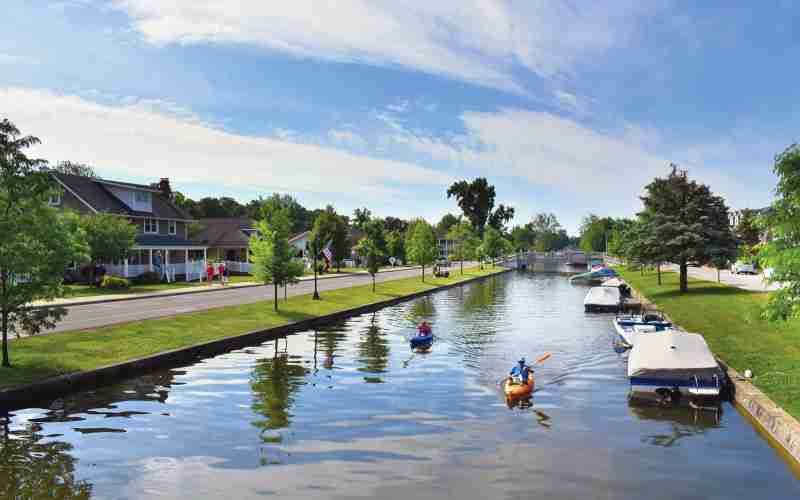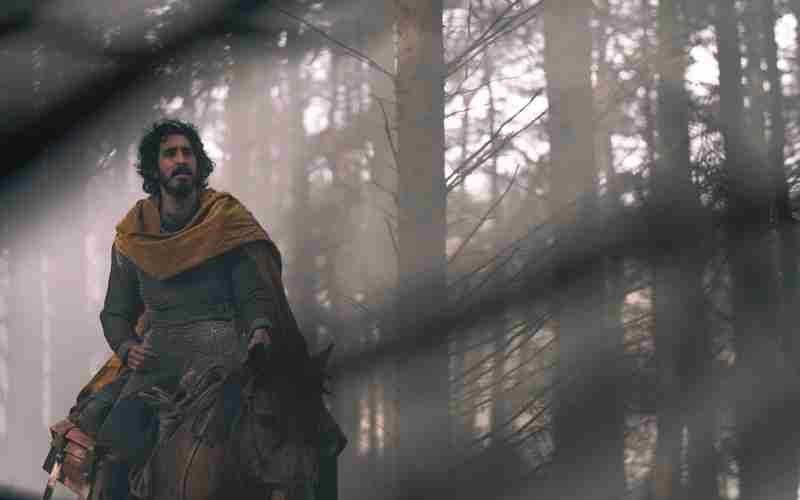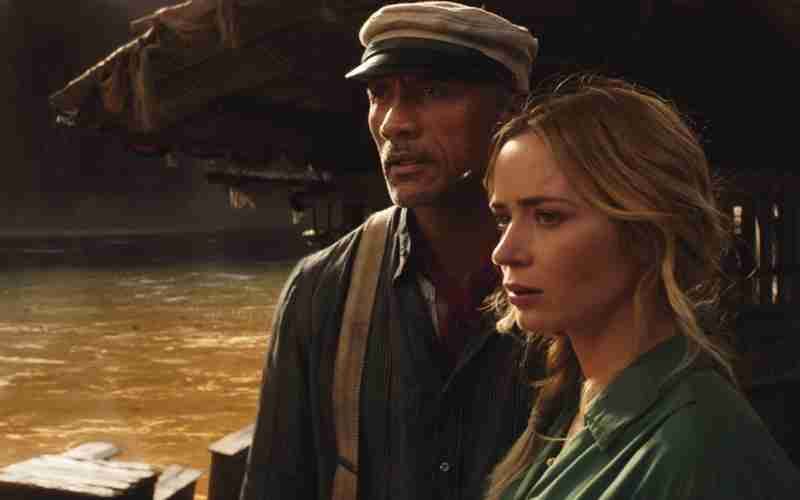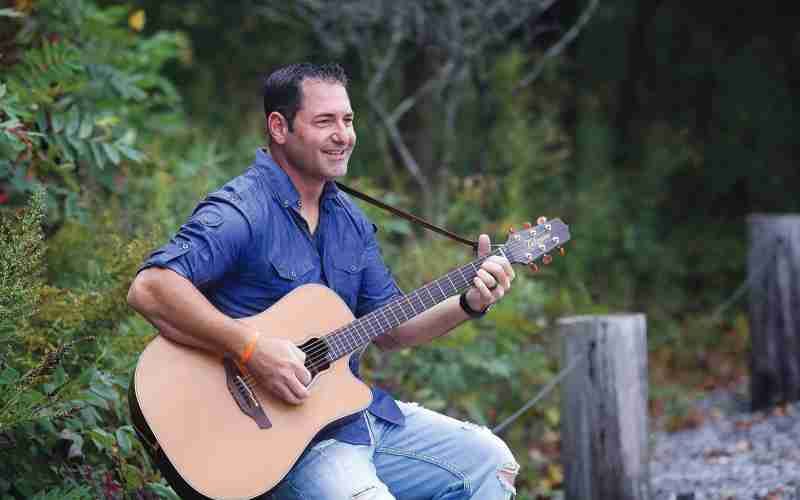In 1911, an unsigned editorial ran in no fewer than a half-dozen Indiana papers.
It began, “There has always been a great deal of misunderstanding as to just what Winona Lake is, why it is, and how it came to be what it is.”
The writer — whoever he was, why he was, and how he came to be — was addressing a specific issue, which I will get to later. The question at hand is: Do people today have a better understanding of Winona Lake than people had 110 years ago?
I would say “No.” I would even go so far as to type it. In fact, I just did.
Today, Winona Lake looks like a storybook hamlet come to life. Thirty years ago, it looked the same. That is, if the storybook in question had been about an economically depressed and crime-ridden hamlet.
Karen Birt, coordinator of the Winona History Center and the Billy Sunday Home, attended Grace College in the 1990s and she recalled students being told then to avoid certain parts of town.
“I recently gave a tour to somebody,” she said. “As we were walking down the hill to the Sunday Home, he said, ‘I used to live in this house. It was a drug house.’”
Presumably, he wasn’t talking about the Billy Sunday Home, where the prominent evangelical preacher and prohibitionist lived with his family in the early 20th century. No one has resided there since Sunday’s wife died in 1957. I toured the Billy Sunday Home and the strongest substance I saw there was Vichy Water.
Billy Sunday was the man who put Winona Lake on the map in 1911. Bruce Wilcoxson was the man who took it out of the crime news section and put it back on the map in the 1990s. Wilcoxson helped create the Village at Winona, which isn’t a village in the literal sense. It’s a village as defined by that ancient proverb: “It takes a village to raise a tourism mecca.”
The Village at Winona is a delightful place to spend a day. There you can find a coffee shop, an ice cream parlor, a do-it-yourself pottery studio, art galleries, a wine shop, a candy store, sporting goods dispensaries, and stores that sell spices and cooking oils. There’s also a renowned Asian restaurant, Cerulean.
Cerulean, which has been around since the late 1990s, was the first destination restaurant to open in northeast Indiana in the era of culinary tourism, cable cooking competitions, and posting photos of lunch on Instagram.
All the shopping and eating in the Village at Winona happens alongside a picturesque canal. So successful is the Village that even a stationer can thrive there, hence LetterWood, which is owned by Mike and Amber Walker.
According to Mike, a few years back the Walkers quit their jobs as a high school teacher and a pharmaceutical sales rep to fulfill their dream of opening a stationery store. In the 21st century, this sounds a bit like quitting Wall Street to sew fringes on surrey tops, but the Walkers have prospered designing and printing their own paper products in the Village at Winona. As a luddite and ancient scribe, I am always pleased to meet someone who is making a good living selling paper.
Their most popular items right now are posters and postcards created as a senior project by Grace College grad, Mitchell Bowen. Inspired by Works Projects Administration posters, Bowen designed images that tout Winona Lake in a manner that is both classic and contemporary. Several stores at the Village of Winona sell Bowen’s posters and postcards, which they have a tough time keeping in stock.
Another product that several stores sell is alcohol. They may have a tough time keeping that in stock, but it’s not because I drank any while I was there.
Billy Sunday was equivocal on this topic: “Whiskey and beer are all right in their place,” he was quoted as saying. “But their place is in hell.”
That wasn’t as equivocal as I remembered.
Sunday’s war against alcohol was immortalized in the Fred Fisher standard, “Chicago” —
Chicago, Chicago that toddling town
Chicago, Chicago I will show you around
Bet your bottom dollar you have some fun in Chicago, Chicago
The town that Billy Sunday couldn’t shut down
No one is sure what toddlin’ is supposed to refer to there, but it’s a good bet that Sunday was against it. In addition to alcohol, Sunday denounced dancing, theatergoing, cardplaying and novel-reading.
Where vice was concerned, Sunday painted with a broad enough brush to slap a coat on whatever toddlin’ was.
Before Sunday moved to Winona Lake in 1911, Fred, Edward, and Christian Beyer opened a resort there called Spring Fountain Park. It was very much a forerunner of the modern theme park and had spring houses where people could enjoy pure, healing waters. It was also a Chautauqua site, which meant that it was part of the adult education and edification movement that began in western New York in 1873.
In the late 1880s, an organization called the Winona Assembly brought a more explicitly religious version of the Chautauqua movement to Winona Lake. The Winona Assembly received financial support from such wealthy industrialists as John D. Rockefeller, Henry J. Heinz, and John M. Studebaker, which was problematic for some people who weren’t wealthy industrialists. This was why editorials like the one mentioned earlier were published: The involvement of prominent fat cats made people suspicious about the motives of the Winona Assembly. The editorials were intended to reassure them.
“Partially because Rockefeller, Heinz, and Studebaker supported it,” Birt explained, “it was seen by some as a playground for the rich. But — in actuality — it never made any money. In fact, they had to declare bankruptcy twice.”
Visitors to Winona Lake in the early 20th century were expected to adhere to a high standard of behavior. Drinking was prohibited, of course, and men weren’t allowed to go shirtless, which was a common proscription in those days. It is easy to see why Sunday chose Winona Lake as a home, a base of operations, and a place to do yardwork shirtless (according to a story in Terry White’s and Steve Grill’s book, “Winona at 100”).
Sunday apparently had a shirtlessness permit.
BIlly Sunday
The Winona History Center is a good place to learn about Sunday, who had a conversion experience in the 1880s and left behind his National League Baseball career to preach the gospel. His preaching style was described by one writer as a cross between Billy Graham and Jerry Lee Lewis. Sunday slid across the stage, as if into bases, and broke chairs. In fact, chair breaking may have been as much of a signature move for Sunday as guitar smashing is for British rocker Pete Townshend.
As great men like Billy Sunday and Bobby Knight have proved, Indiana truly is a state that was built on chair abuse. There isn’t a lot of footage of Sunday in action, Birt said, because he was resistant to being filmed.
Sunday was a generous man, and his tastes were not extravagant, but it is undeniable that he made a lot of money as a touring preacher.
“From 1907 to 1918, he earned $1,139,315,” wrote Indiana historian W.A. Firstenberger, “nearly eighty-seven times the average worker’s income of $13,000 during the same twelve years. This level of income was unprecedented for a religious leader. It worried church officials, who feared preachers might demand higher salaries or, worse yet, take financial advantage of their position of influence.”
In today’s dollars, that’s roughly $1.8 million per year.
To be fair, a lot of that money went to chairs.
Whatever you think of Sunday’s vocation and remuneration, you have got to admit that he was a fascinating character. He was widely admired in his day and was consulted by several presidents. He is also one of the few famous Indiana residents who didn’t try to leave the state at the earliest opportunity.
Touring his home was surprising for me because I am not much of a fan of touring historic homes in general. There are usually just a lot of sofas that look about as comfortable as army cots and rooms that look like they were decorated to facilitate depression.
But I could see myself moving into Sunday’s Arts & Crafts bungalow with its reading nook and large front porch.
For Sunday, the house was a place to recuperate from tours, and the qualities that made it a sanctuary for him are still obvious today.
What isn’t obvious in Winona Lake today are Sunday’s views about alcohol. Birt said the Prohibition Party was still holding meetings in Winona Lake well into the 1980s, but she doesn’t think it’s much of an issue anymore.
Still, Sunday’s strong religious faith does imbue Grace College, a 72-year-old evangelical Christian school.
INdoors and out
If you are as much of a history nerd as I am, you’ll want to meet Birt. I took up a ridiculous amount of her valuable time, though she gave it willingly and, of course, knowledgably.
In front of the Sunday Home is the last remaining remnant of Winona Lake’s healing springs era (the springs themselves dried up long ago). It’s a spring house where people convalesced 100 years ago.
None of the old hotels are still open, but some of the structures that housed them are still around. An example is the Franconia Hotel, which has been turned into a private residence but still resembles an old hotel. The Winona Hotel, which was turned into condos, is similar.
The Westminster Hotel was repurposed as Grace College’s Westminster Hall, and it houses the Winona History Center. Parents can still rent rooms there when visiting students.
Finally, there’s Winona Lake Park, which has one of the nicest public beaches I have seen in northeastern Indiana — and I have seen a lot. It has a pier, a splash pad, kayak rentals, and a lifeguard station, all of which are well maintained. I took my shirt off there to celebrate changed mores, but a picnicker told me to put it back on.
“Is it to adhere to a strict code of public behavior as defined by the Winona Assembly?” I asked her.
“No,” she said. “It’s because we’re trying to eat lunch and we have sensitive stomachs.”
That didn’t really happen, but I was worried that it might, so I kept my shirt on.
 Submit Your Event
Submit Your Event




